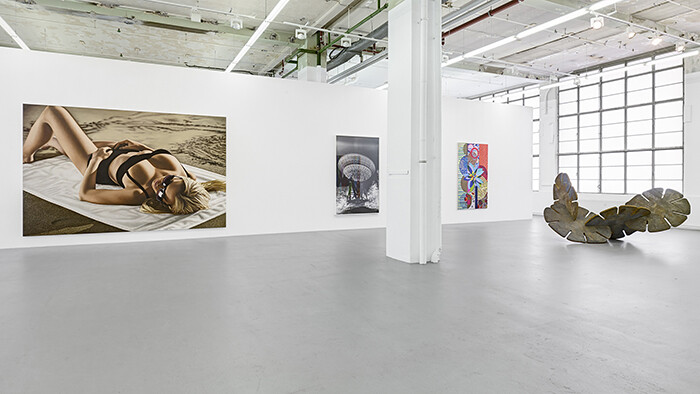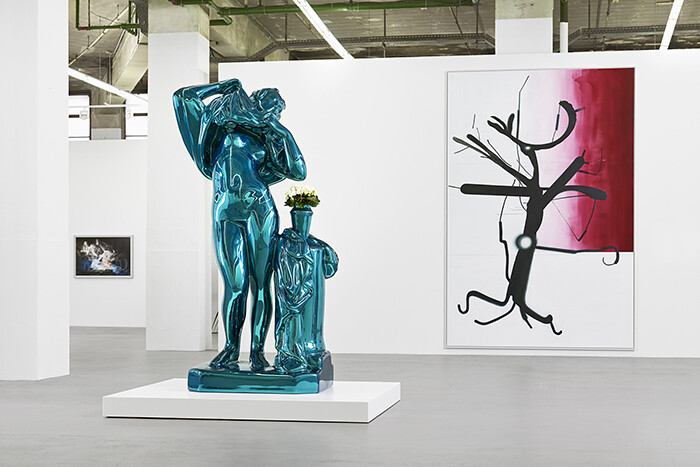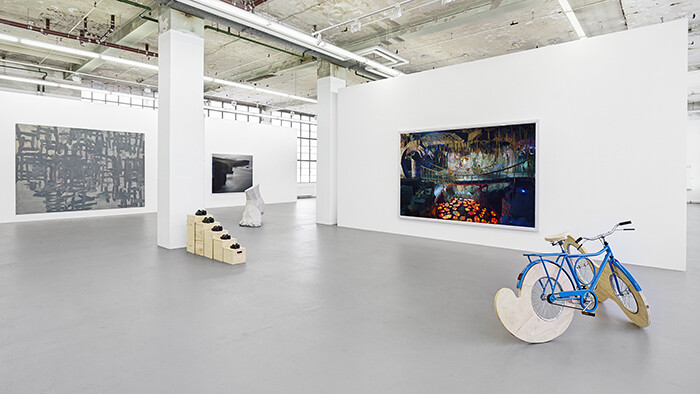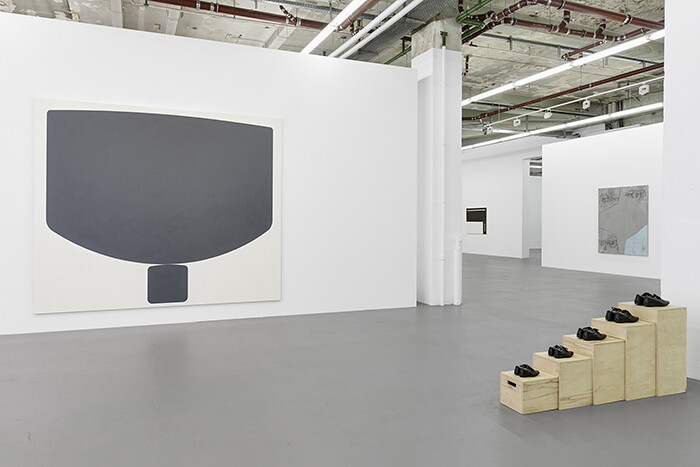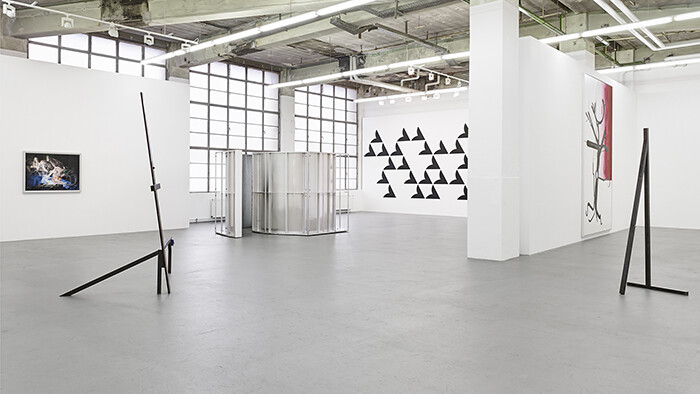If someone ever wished to consider the effects of German reunification on the commercial art scene after 1990, Galerie Max Hetzler would make a perfect case study. Hetzler, who had already opened his first gallery in 1973 in Stuttgart, played a central role as an art dealer in Cologne during the 1980s before relocating his business east to Berlin, the new “old” capital, in 1994. During his decade in Cologne—at that time arguably the most important city for contemporary art in West Germany—Hetzler introduced the work of Jeff Koons to the German public, and the gallerist’s name became synonymous with the predominantly male artist-crowd orbiting around Martin Kippenberger and Albert Oehlen (“the Hetzler Boys”). Despite Hetzler’s relocations and the reshuffling of his program over the years, his business has endured. True to its origins, today Hetzler remains a gallery constantly on the move—a venerable standby where, over the years, the art of constant change has been quietly perfected. Case in point: this fall the gallery inaugurated not one but two spaces in the old and traditionally bourgeois western Berlin neighborhood of Charlottenburg, and next spring will see the opening of a new Hetzler satellite in Paris’s Marais district.
With a treasure trove of history to draw upon, why is it that “REMEMBER EVERYTHING,” which celebrates Hetzler’s fortieth anniversary (and the departure from his main exhibition space in Berlin-Wedding’s Osram Höfe), doesn’t deliver what its title promises? Perhaps simply because “REMEMBER EVERYTHING” is not a journey through four decades of activity of one of the most important German galleries for contemporary art, but rather a staid group show that emits all the flair of an oversized premium booth at an art fair. In a way, the exhibition is a good example of what one could call a truly missed opportunity. The gallery’s presumably rich archives are conspicuously absent: there are no vitrines packed with letters and photographs; no displays of old invitation cards and exhibition posters; no memorabilia and snapshots from the Cologne decade—not even a single Kippenberger. Likewise there are no traces of some of the gallerist’s grander unrealized visions, such as Hetzler’s failed plan from the early 1990s to set up one hundred sculptures in the public space of Berlin, the “Grande Bouffe,” as he once called it. Instead, when it comes to the historical record, the only thing paying tribute to the great history of the gallery is a wall with a list of all the exhibitions that have ever been shown. So, what is there to see?
The exhibition gathers around thirty recent works from all the artists Hetzler currently represents. It’s an unsentimental, torpid affair, even as First Point (2012)—a short film by Richard Phillips (featuring Lindsay Lohan and a score by Daft Punk’s Thomas Bangalter) fusing film noir elements with imagery borrowed from surfing culture—introduces some sort of heavy sonic atmosphere to the show; Bangalter’s droning ambient soundtrack drifts throughout the entire exhibition. Following the release of the clip, which premiered at last year’s Art Basel, the artist produced a larger-than-life, hyper-realistic painting. It features a still image of Lohan in a black bikini. Under different circumstances, Phillips’s work would have easily passed as the kitschiest piece on display, were it not for Jeff Koons’s Metallic Venus (2010–12), a mirror-polished sculpture of stainless steel combined with a white geranium plant, located across the gallery and standing over eight feet tall.
Next to Phillips’s painting hangs Fullmoon@Yesnaby Swell (2013), a large-format C-print by the London-based artist Darren Almond. In his “Fullmoon” series, Almond has been producing neo-Romanticist pictures of landscapes at night with extended exposure times since the late 1990s. A certain sense of painterliness can also be found in the other photographic works on display, two by German photographer Thomas Struth—Figure Charité, Berlin (2012) and Ride, Anaheim, California (2013)—as well as another two by Dutch artist Rineke Dijkstra—Taryn Simon, London, England, June 25, 2011 (2011) and Georgie Henley, London, October 9, 2010 (2010). Painting in the current Hetzler portfolio seems to circle around two poles: on one hand there are the geometrical-abstract aesthetics of works like Beatriz Milhazes’s Bye Bye Love (2011–12), Yves Oppenheim’s Untitled (1301 L) (2013), Frank Nitsche’s YES-35-2013 (2013), André Butzer’s Untitled (2013), or the wall piece by Bridget Riley’s Quiver 2 (2013). The works of Christopher Wool (Untitled, 2010), Albert Oehlen (Untitled, 2013), and Günther Förg (Untitled 2, 2009) seem to follow a different path of abstraction: a more floating, almost organic approach to picture-making.
At least one piece seems to address the issue of time and progress; it is Cronology (2013) by the Brazilian artist Marepe. Here five differently sized wooden boxes form an ascending flight of steps, and on each step we find a pair of black shoes, their sizes increasing accordingly. Another piece by Almond, Told and Untold (2013), provided the exhibition with its title: two relief-plate casts, one made of bronze, another made of aluminum, together read “REMEMBER EVERYTHING.” The title can be seen as a promise, but also as an imperative or even as an impossible task, as many shows nowadays are all too easy to forget.
